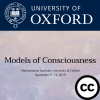Tim Palmer - Creativity and Consciousness: A Consequence of the Brain’s Extraordinary Energy Efficiency?
Tim Palmer
Department of Physics, University of Oxford
This talk is in two parts. In the first part, I suggest that creativity arises from a close synergy between two modes of neuronal operation (corresponding to Kahnemann’s Systems 1 and 2) where in the first, the limited amount of available energy to the brain is spread across large numbers of active neuronal networks, making them susceptible to noise; and in the second, available energy is focussed on smaller subset of active networks, making them operate more deterministically. In the second part, I define consciousness in terms of an ability to perceive an object as independent of its surroundings.
This implies an ability to perceive counterfactual worlds where objects are perturbed relative to their surroundings. I argue that such perception may require quantum theoretic processes to be operating in the brain, since the very formulation of quantum theory (whether in convention or unconventional interpretations) involves the primacy of states of alternate worlds - alive and dead cats and so on. I argue that the brain’s reliance on such quantum processes may have arisen because they are more energy efficient than corresponding classical processes, and give some examples to justify this. Overall, I argue that human creativity and consciousness may have arisen from the brain’s evolution to become an organ of exceptional energy efficiency.
Filmed at the Models of Consciousness conference, University of Oxford, September 2019.




